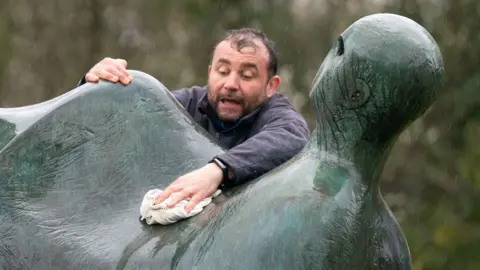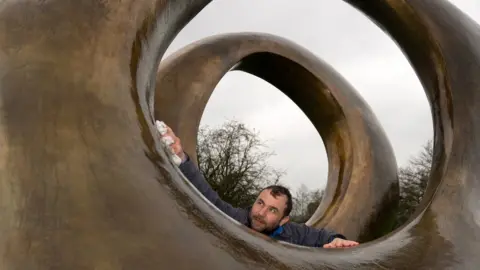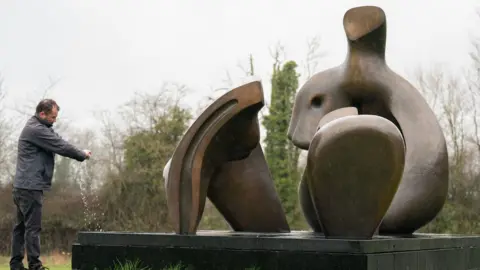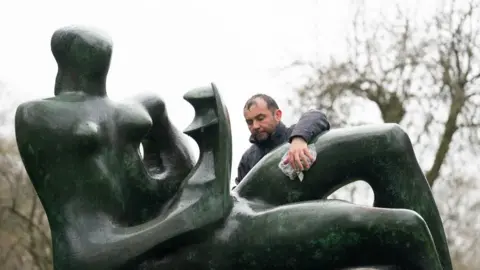Perry Green: Henry Moore bronzes cleaned up for new exhibition
 PA Media
PA MediaA collection of Henry Moore bronzes are getting a final clean ahead of a new exhibition celebrating his work.
Moore, who spent the end of his life at Perry Green, Much Hadham, in Hertfordshire, was renowned for his semi-abstract monumental sculptures.
More than 20 of his pieces will be exhibited by the Henry Moore Foundation in the gardens of his studios.
The exhibition - Vitality: The Human Landscapes of Henry Moore - will open on 5 April.
Senior curator, Dr Hannah Higham, said the significance of his work was "heightened by their placement here in the landscape in which they were created".
 PA Media
PA Media
Moore was born in Castleford, West Yorkshire, in 1898, and later moved to the village of Perry Green, where he stayed for the rest of his life.
He is best known for his monumental bronze sculptures but he also made carvings, drawings, prints and designed textiles and tapestries.
Moore often made work on the subjects of the mother and child and the reclining figure, using nature and the human body as "sources of vitality" which he could harness in his work, the Henry Moore Foundation said.
 PA Media
PA Media PA Media
PA MediaThe exhibition will bring together a selection of bronzes inspired by natural and human forms in the landscape surrounding the studios where Moore developed ideas.
Ms Higham, senior curator of collections and research, said it seemed "appropriate to consider vitality" on the 125th anniversary of his birth.
"Vitality was a word often used by Moore to describe a quality he hoped to embody in his art," she said.
"He used the term to describe an animating force or power."
Visitors to the Henry Moore Foundation will also be able to access a new audio-visual app about the exhibition, offering insights into the artist studio practices, the development of his famous sculptures and his life in the village.
 PA Media
PA Media
Find BBC News: East of England on Facebook, Instagram and Twitter. If you have a story suggestion email [email protected]
